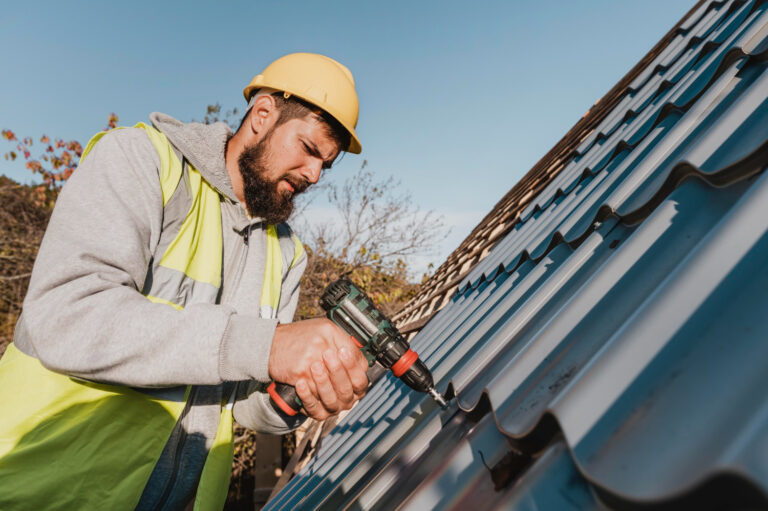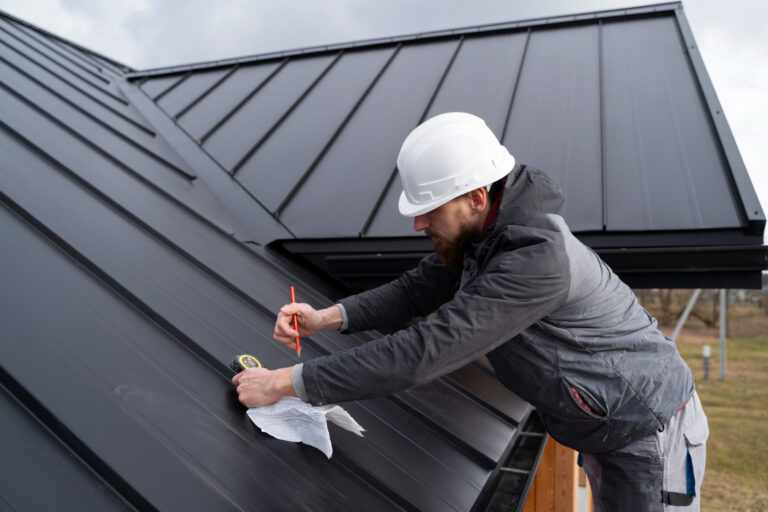When it comes to roofing, one of the biggest decisions homeowners face is whether to repair or replace their roof. Each option comes with its own set of benefits, costs, and considerations. Understanding the difference between the two, along with the signs that might point you in the right direction, is essential to making the best decision for your home and budget. In this blog, we’ll explore the key factors to consider when deciding between roof repair and roof replacement.
1. When to Repair Your Roof
Roof repairs are often the most cost-effective option for minor issues. Here are some scenarios where a roof repair might be your best choice:
- Small Leaks: If you notice a small leak or water stain on your ceiling, it may not require a full roof replacement. Often, a small leak can be traced to a specific area and repaired without needing to replace the entire roof.
- Missing or Damaged Shingles: If your shingles are missing or damaged in just a few spots, a repair can restore the roof’s integrity. Replacing individual shingles is typically less expensive than replacing an entire roof.
- Minor Storm Damage: In cases where a recent storm has caused limited damage (such as a few cracked or missing shingles), a repair may be sufficient to restore the roof to its pre-storm condition.
- Cost-Effective Solution: If your roof is still relatively young and hasn’t reached the end of its lifespan, repairing minor issues can extend its life without the need for an expensive replacement.
2. When to Replace Your Roof
While repairs are suitable for some issues, there are times when a full roof replacement is the only viable option. Here are the signs that indicate it may be time for a new roof:
- Extensive Damage: If your roof has widespread damage, such as large areas of missing shingles or significant leaks, a replacement may be necessary to avoid further issues. A patch job may not be enough to ensure the roof’s long-term functionality.
- Old Roof: If your roof is approaching or has surpassed its expected lifespan (typically 20-30 years for asphalt shingles), it’s likely time for a replacement. Even with regular maintenance, an aging roof can begin to deteriorate and may not provide the protection it once did.
- Frequent Repairs: If you find yourself repeatedly repairing your roof, it could be a sign that the roof is no longer structurally sound. Constant repairs can add up quickly and may not be as cost-effective as replacing the entire roof.
- Visible Signs of Wear: If you notice large patches of curling, cracking, or missing shingles across the roof, it’s a sign that the roofing materials are no longer functioning properly. Similarly, if you notice granule loss or asphalt shingle discoloration, it could indicate the roof’s age and poor performance.
- Sagging or Structural Issues: A sagging roof is a serious red flag and often points to underlying structural problems. If the roof is bowing or has noticeable dips, it could indicate water damage, weakened support beams, or the need for a complete overhaul.
3. Cost Considerations
Cost is a significant factor when deciding between a repair and a replacement. Generally, roof repairs are much more affordable than replacements, but they may not provide a long-term solution for serious issues. Here’s a breakdown of typical costs:
- Roof Repairs: Depending on the extent of the damage, repairs can range from a few hundred dollars for small fixes to over a thousand dollars for more extensive work. The advantage of repairs is that you get a temporary fix without the high upfront cost of a replacement.
- Roof Replacement: A full roof replacement can be a major investment. The cost typically ranges from $5,000 to $10,000, depending on the size of your roof, the materials chosen, and labor costs. However, while the initial cost is higher, a new roof will provide years of protection, saving you from frequent repairs.
4. Energy Efficiency
A roof in good condition plays a vital role in maintaining energy efficiency in your home. Older roofs, especially those with leaks or poor insulation, can allow heat to escape in the winter and cause your cooling costs to rise in the summer. A roof replacement with modern materials may increase your home’s energy efficiency and reduce your utility bills.
Some roofing materials, such as metal or reflective shingles, are designed to reflect sunlight, keeping your home cooler during hot weather. Additionally, a new roof can help to maintain better insulation, ensuring that your home stays comfortable year-round.
5. The Role of a Professional Roofer
Whether you opt for roof repairs or a full replacement, it’s important to hire a professional roofing contractor. A roofing expert can accurately assess the condition of your roof and provide you with a clear recommendation. They’ll help you make an informed decision and ensure the work is done properly and safely.
When hiring a roofing professional, be sure to:
- Check References: Look at customer reviews and ask for references to ensure that the contractor has a track record of reliable work.
- Verify Insurance and Licensing: A reputable contractor will be licensed and insured to protect both you and their workers.
- Get a Written Estimate: Obtain a written estimate that details the scope of work, costs, and timelines to avoid misunderstandings.
6. Conclusion
Deciding between roof repair and roof replacement requires careful consideration of your roof’s condition, age, and the cost of repairs versus replacement. While repairs can be a quick and budget-friendly solution, they are not always a long-term fix. A new roof may require a larger upfront investment but can provide you with peace of mind and increased property value.
Always consult a professional roofer to assess your roof and determine the best course of action. By addressing roofing issues early, you can avoid larger problems down the road and ensure your home remains protected for years to come.




1 thought on “Roof Repair vs. Roof Replacement: What You Need to Know”
77qqslots, slots are my jam! Hoping for some high RTP ones and maybe a jackpot! Let’s spin and see what happens. 77qqslots